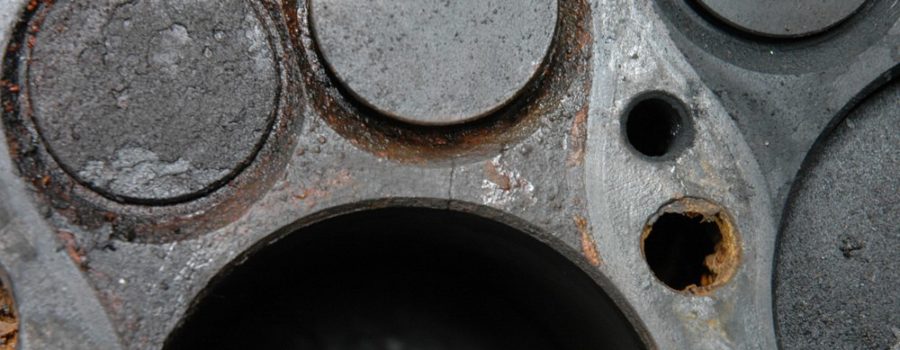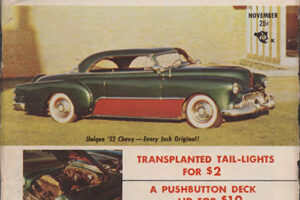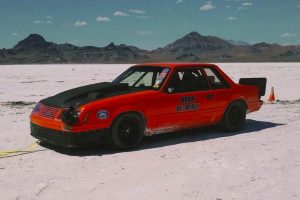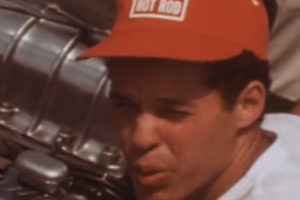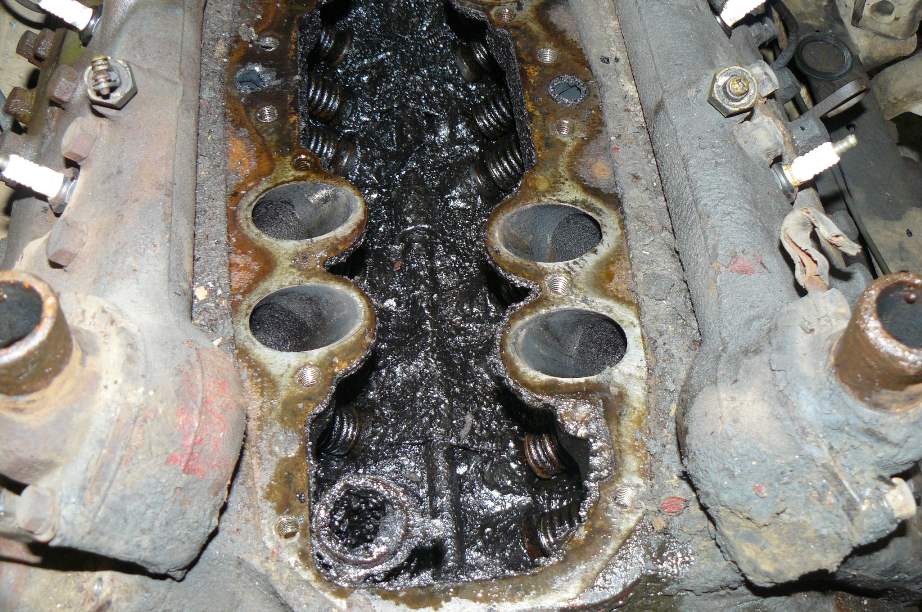 So today we are going to cover what to do about sludge and carbon inside your engine. Most car owners remove the worn out engines and hot tank all dirty part. Any engine that has carbon buildup in the combustion chambers, also has sludge in the lifter chambers (valley) is badly worn and need a complete rebuild. Some car owners have good running engines that are full of sludge and want to clean them out. The only way to do this is to remove the intake manifold and drain oil from the pan. WEAR SAFETY GLASSES FOR THIS OPERATION. Be sure you cover front of the car to keep clean. Using cleaning solvent and a stiff wash brush, wash sludge down through oil drain holes into the oil pan. Then use an air gun to blow solvent into the pan. Just use some good shop rags (Not your wives nice bath towels) to soak up any residue.
So today we are going to cover what to do about sludge and carbon inside your engine. Most car owners remove the worn out engines and hot tank all dirty part. Any engine that has carbon buildup in the combustion chambers, also has sludge in the lifter chambers (valley) is badly worn and need a complete rebuild. Some car owners have good running engines that are full of sludge and want to clean them out. The only way to do this is to remove the intake manifold and drain oil from the pan. WEAR SAFETY GLASSES FOR THIS OPERATION. Be sure you cover front of the car to keep clean. Using cleaning solvent and a stiff wash brush, wash sludge down through oil drain holes into the oil pan. Then use an air gun to blow solvent into the pan. Just use some good shop rags (Not your wives nice bath towels) to soak up any residue.
On pre- 1949 engines remove the oil pressure valve in the front of the valley and clean it. Remove oil pan. Use spray gun and wash all sludge residue off the crank shaft, rods and cam shaft. There again blow dry, also use rags. If oil pump is pre-1949 it should be removed and new 80# pump installed.
Note: To convert the new pumps (8BA-6600 & 8BA-6600-HO) to a long body, you will need: 8RT-6615 oil Pickup & 41A-6623 oil screen.
Also the oil pickup tube needs to be altered to fit in the oil pan. lf this is done, stretch the spring in the pressure valve in the valley. Also the groove needs to be taken out of plunger. Braze it with brass, or weld it with steel. This slows the oil flow that pours on the timing gears and the front main seal. Assemble all parts.
Add new oil. Start the Engine (WATCH OIL PRESSURE) and let idle for 20 minutes. Drain oil to remove any solvent or loose dirt. Refill with new oil. The new engine oil will still turn dark real fast. It picks up the color from any residue left. As you all know the color of your oil has no bearing on oils condition. So chill out, that is normal.
Here are a few things that cause sludge. Of course worn piston rings let too much oil up into the combustion chamber. THERE IS NO CURE FOR THIS EXCEPT RE-BORE NEW PISTONS AND RINGS. Not changing oil soon enough, cracks in engine block. Cracks in the head, leaky head gaskets. starting engine and not driving at least 20 miles. faulty thermostat, also a 160 degree Fahrenheit thermostat, is the cause of engine sludge. There is no reason using today’s high tech engine oils for the inside of any block not to be shiny and clean for the life of engine. I instruct V-8 owners to only use 195 degree thermostats. They force fast warm up of engine coolant. At this temperature a lot of the impurities will be boiled out of the engine oil. Also 195 degree states will slow coolant flow though the radiator to give the radiator and fan more chance to lower the coolant temp. Also only use Propylene Glycol antifreeze that won’t destroy your engine bearings if it mixes with engine oil. This tip will save you and your engine in the event of a running failure.
Removing Carbon from the combustion chambers? The only way to do this is to remove the heads and scrape the head clean! Sorry it’s not something more cool.
 Back in the 1950’s there where mechanics that would mix their own special magic potions and snake oils to remove carbon and at the same time remove sludge out of the engine block. The carburetor and combustion chambers are designed only to have air and gasoline go down through them. Keep this in mind. The mechanic after selling you on this method would pour the magic potion down through the carburetor and try to force the engine to keep running until it gets flooded and quits. I am sure he would use words like magic scrubbing bubbles or filled with millions of hungry bee’s that only eat carbon and polish the metal before heading out the exhaust to go do charity work for under privileged children. Sure it sounds like a great idea but in fact what you have agreed to have him do is pour liquid evil into your engine.
Back in the 1950’s there where mechanics that would mix their own special magic potions and snake oils to remove carbon and at the same time remove sludge out of the engine block. The carburetor and combustion chambers are designed only to have air and gasoline go down through them. Keep this in mind. The mechanic after selling you on this method would pour the magic potion down through the carburetor and try to force the engine to keep running until it gets flooded and quits. I am sure he would use words like magic scrubbing bubbles or filled with millions of hungry bee’s that only eat carbon and polish the metal before heading out the exhaust to go do charity work for under privileged children. Sure it sounds like a great idea but in fact what you have agreed to have him do is pour liquid evil into your engine.
Here is why. The potion goes to work washing needed lubrication off the cylinder walls and so your rings loose the protective barrier between them and the cylinder wall. Also because liquids don’t compress like air, this also puts your pistons and rods under added destructive pressures. You now run risk of the potion making its way past the rings and entering your oiling system. Which because of the chemical makeup of the cleaner will only result in brake down of oil. Good job! You just fired oil from the one job it did best. Your valve springs put a major amount of pressure on the cam. Well that’s the next stop for this F-5 engine tornado. The fluid attacks the lubricant on your cam bearings and you could then end up with low or no oil pressure. If you didn’t already know most Flathead engines with low oil pressure commonly have warn cam bearings. If that was not bad enough your muffler ends up full of all the mess that made it past the valves. Lastly carbon that breaks loose can end up under a valve head and seat. Then your compression goes out the door.
 As you can figure when the oil is drained out and then refilled the residue of potion, with all it’s loosened sludge and destructive carbon particles are now run through all your bearings and oil pump. You just pulled the pin on a grenade.
As you can figure when the oil is drained out and then refilled the residue of potion, with all it’s loosened sludge and destructive carbon particles are now run through all your bearings and oil pump. You just pulled the pin on a grenade.
There is also the old tale that you can’t run a high detergent oil in an engine that has had non-detergent oil in it. This is just not true. I started using ford 10-40 oil in an old 1956 Plymouth V-8 I used for a work car. It was clear full of sludge from the owner just doing one mile trips. There was no oil going overhead as the passages where clogged solid. I ran the engine five years with no failure. The only thing that happened was that the oil (any oil) turned dark fast from the black carbon coating inside the engine.
So do you really want to beat your engine to death? I know the idea of pulling the head and cleaning the carbon off by hand sounds like a large task but the project is not that hard and as you can see will save you from all kinds of problems down the road.



